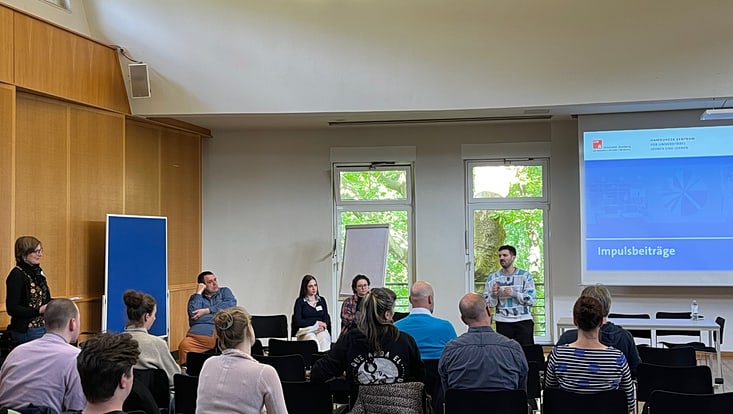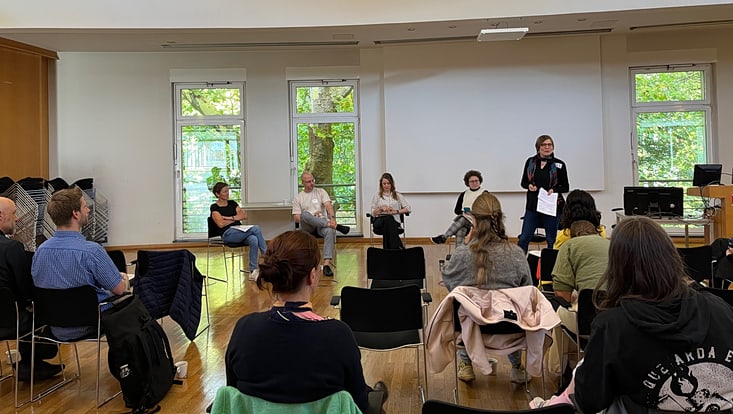AI handout for students at the UHHAt the networking meeting AI Hands-On #7, impulses and perspectives for practical support for students in dealing with AI were collected.
23 May 2025

Photo: UHH / Hartel
The seventh edition of our AI Hands-On format took place on 22 May with the aim of developing content suggestions and perspectives for a new handbook on dealing with (generative) AI for students. Prof. Dr Kai-Uwe Schnapp welcomed the participants and emphasised the importance of the topic for the UHH and the differentiation of a handout from subject-specific regulations and the existing orientation framework. The handout explicitly addresses students.
Firstly, the participants were presented with examples of handouts from other universities: What formats and content are helpful, what works, what doesn't? As a warm-up, initial impressions of the topic were formed. These were then explored in greater depth in the subsequent keynote speeches from lecturers, students and the study organisation.
It became clear time and again that there is a great need for guidance and that many students have not yet found much binding and helpful information. The aim should therefore be not only to inform students, but also to enable them to take on the role of expert themselves - based on their experiences in their own academic learning process.
We would like to take this opportunity to thank the initiators Lukas Musumeci (Writing Centre), Jo Iwicki (student, peer tutor), Heino Windt (Study Office EW) and Lea Gröbler (student, text tutor) for openly sharing current challenges.
Against the background that AI is becoming increasingly relevant - also due to the increasing penetration of various applications - the content and form of the handout were discussed in greater depth. In subject-specific groups, the participants collected content, comments and key questions: For example, how can students best be reached? There was a consensus that the design must be activating - for example with pointed questions and memorable titles. Illustrative application examples and use cases are very much in demand. Visual elements such as GIFs on websites could not only show what works, but also point out limitations and misapplications.
Students should learn to deal with AI applications independently and with a scientific attitude (‘You are the expert’). Assistance for communication with teachers, for example in the form of exemplary questions to clarify regulations, was named as equally important. Ultimately, teachers decide what is permissible in the respective context.
However, the challenge remains as to how subject-specific particularities can be appropriately addressed in a general handout.
The DDLitLab would like to thank all participants and speakers. The numerous suggestions from the event will be used to continue the development process of the AI handout in a targeted manner.
Further information on the ‘AI Hands-On’ format can be found on our website.

